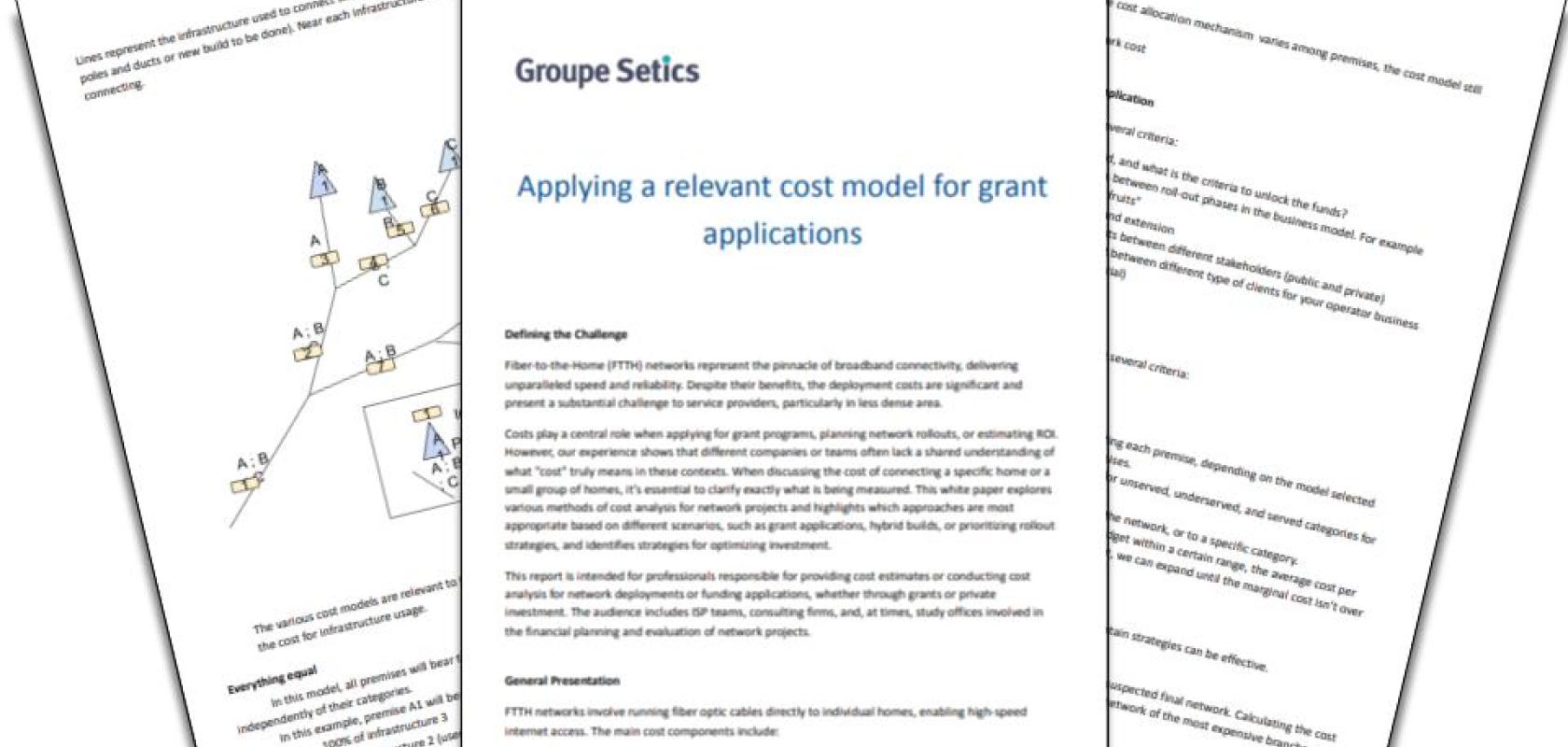Applying a relevant cost model for grant applications in FTTH networks

Applying a relevant cost model for grant applications in FTTH networks - a Setics White Paper
This White Paper from Setics explores various methods of cost analysis for network projects and highlights which approaches are most appropriate based on different scenarios, such as grant applications, hybrid builds, or prioritising rollout strategies, and identifies strategies for optimising investment.
Deployment costs for fibre-to-the-Home (FTTH) networks can present a significant challenge to service providers, particularly when it comes to less dense areas. Costs play a central role when applying for grant programs, planning network rollouts, or estimating ROI, but different companies or teams can often lack a shared understanding of what "cost" truly means in these contexts.
This white paper explores various methods of cost analysis for network projects and highlights which approaches are most appropriate based on different scenarios, such as grant applications, hybrid builds, or prioritising rollout strategies, and identifies strategies for optimising investment.
Who should read this White Paper?
This white paper is essential reading for professionals involved in financial planning, cost estimation, or funding applications for network deployments, including Internet Service Providers (ISPs), consulting firms, and study offices. Whether you’re managing grants, private investments, or network rollout strategies, this document will help you navigate the complexities of cost analysis for FTTH projects.
What does this White Paper contain?
This comprehensive guide explains the various methods of cost analysis used in FTTH network deployments, with a special focus on cost-per-premise challenges, infrastructure allocation, and cost optimisation strategies.
It provides in-depth advice and information about different cost models that are crucial when applying for grants, planning hybrid builds, or prioritising rollout strategies. You’ll also discover insights on how to calculate and allocate costs depending on factors like geography, population density, and existing infrastructure.
This White Paper provides a framework for defining relevant cost models that suit your specific project, whether you’re deploying in unserved, underserved, or already-served areas. It offers practical strategies for reducing costs, re-evaluating network scopes, and even considering alternative technologies for hard-to-reach areas.

